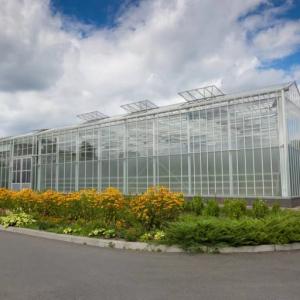How Commercial Greenhouses Thrive in the Middle East's Harsh Climate?
The Middle East is known for its arid and harsh climate, with scorching temperatures and limited water resources. However, despite these challenges, commercial greenhouses have managed to thrive in this region, contributing to the growth of the agricultural sector and providing a sustainable solution for food production.
The Middle East is characterized by high temperatures, intense sunlight, and limited rainfall. These conditions pose significant challenges to traditional agriculture. However, commercial greenhouses have leveraged technological advancements and agricultural expertise to overcome these hurdles successfully.
Adaptations for Extreme Temperatures
Insulation and Shading
Commercial greenhouses in the Middle East employ advanced insulation materials to regulate internal temperatures. Thick walls and double-glazed windows help minimize heat transfer, reducing the impact of external temperature fluctuations. Additionally, shading systems are used to block excess sunlight and prevent overheating.
Cooling Systems
To combat high temperatures, commercial greenhouses utilize various cooling systems. Evaporative cooling pads, misting systems, and fans are strategically placed to maintain optimum temperature and humidity levels for crop growth. These cooling techniques are essential for preventing heat stress and ensuring the well-being of plants.

Efficient Water Management
Water scarcity is a pressing issue in the Middle East. Commercial greenhouses tackle this challenge by implementing efficient water management techniques.
Drip Irrigation
Drip irrigation systems are widely used in commercial greenhouses as they deliver water directly to the roots of plants, minimizing water wastage. This targeted approach ensures that plants receive an adequate water supply while conserving this precious resource.
Desalination
Given the limited freshwater resources, greenhouses in the Middle East often rely on desalination methods to convert seawater into usable irrigation water. This technology has significantly contributed to sustainable agriculture by reducing dependence on freshwater sources.
Soil and Nutrient Management
Creating the optimal growing environment within commercial greenhouses requires careful attention to soil and nutrient management.
Hydroponics
Hydroponics, a soilless cultivation technique, is widely practiced in commercial greenhouses. This allows plants to grow in a nutrient-rich water solution, eliminating the need for soil. This method not only conserves water but also provides precise control over nutrient delivery, promoting healthier and more productive crops.
Soilless Growing Media
In addition to hydroponics, commercial greenhouses in the Middle East also utilize soilless growing media such as coco coir, perlite, and vermiculite. These media offer excellent water retention and aeration properties, ensuring optimal root growth and nutrient absorption.
Crop Selection and Breeding
Commercial greenhouses carefully select and breed crops that are well-suited to the Middle East's harsh climate. These crops are chosen for their ability to withstand high temperatures, drought conditions, and salinity. Through selective breeding and genetic modification, resilient varieties of fruits, vegetables, and herbs have been developed to thrive in this challenging environment.

Integrated Pest Management
Pest control is a critical aspect of greenhouse farming, and commercial greenhouses in the Middle East employ integrated pest management (IPM) strategies to minimize the use of chemical pesticides.
Biological Controls
Biological controls involve the use of beneficial insects and organisms to control pests naturally. Ladybugs, predatory mites, and parasitic wasps are introduced into the greenhouse to prey on harmful insects, reducing the need for chemical intervention.
Beneficial Insects
Greenhouses also introduce beneficial insects that act as pollinators, ensuring proper fertilization and fruit set. This approach not only supports ecosystem balance but also enhances crop yield and quality.
Automation and Technology
Automation and technology play a crucial role in the success of commercial greenhouses in the Middle East.
Climate Control Systems
Sophisticated climate control systems are utilized to monitor and adjust temperature, humidity, and ventilation within the greenhouse. These systems ensure optimal growing conditions and safeguard crops against extreme weather events.
Sensor Technology
Greenhouses are equipped with sensors that monitor various environmental factors such as light intensity, soil moisture levels, and nutrient concentrations. This data is analyzed in real-time, enabling growers to make informed decisions and optimize crop management practices.
Collaboration and Knowledge Sharing
Commercial greenhouses in the Middle East thrive through collaboration and knowledge sharing among farmers, researchers, and technology providers. By exchanging best practices, research findings, and innovative solutions, the industry continually evolves and adapts to overcome challenges posed by the harsh climate.






